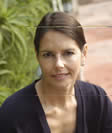
A number of organisations are experimenting with different models, varying from subsidy to non-subsidy schemes and in delivery methods. Experimentation at this stage is extremely important, says Mair.
Grameen Health, for example, has a micro health insurance plan that costs $1.75 a year which covers six members of the family for rudimentary preventive medicine.
With some 100 million euros in funding from the Dutch government to start pilot projects in four countries in sub-Saharan Africa, PharmaAccess Foundation works specifically on the financing side of micro health insurance. They currently subsidise 90-95 per cent of private voluntary health insurance, using local partners as healthcare providers.
insurance, using local partners as healthcare providers.
AAR, the largest and oldest HMO (health management organisation) in East Africa, works through a membership programme. As middle men accounted for some 65 per cent of its costs, the organisation became a micro insurance company so that it could come up with its own products to reach the poor.
“Yes, there is an opportunity for business but we have not found the solution or the perfect model yet,” Mair said during Net Impact’s Doing Good, Doing Well 2009 conference held here recently. “We need to address bottleneck issues, learn how to do things better, and identify the kind of model we can scale around the world.”
Micro health insurance and microfinance
Mayte Oosterveld, director community health systems at PharmAccess Foundation, says that unlike microfinance where you can lend part of a loan, you can’t sell one quarter of health insurance or treat only malaria. “We can give someone a $1 loan, but we can’t give a very small, restricted healthcare insurance.”
“We need to address a basic package and determine what it is that people will buy,” she says.
The difficulty for micro health insurance, she argues, is that it is a new concept for many people. “As they are paying out of their pockets, they ask: ‘Do I have to pay in advance with the risk that if I need treatment in nine months’ time that the clinic is still going to be there? Or do I keep the money in my pocket so that when a family member falls ill, then I have money to pay for treatment?’”
Educating people about micro health insurance and establishing trust with the group you work with is very important, she says. “The one day that the medication isn’t available … they are never going to buy that insurance again. Then you’ve lost them. That’s why it’s so different from microfinance.”
 Microfinance has had its success stories, but the same is not true for microinsurance, especially when there is an emphasis on serving the poor, Matthew Jowett, senior health financing specialist, with the World Health Organisation in Europe told INSEAD Knowledge. “Insurance, in particular health insurance, is a complex product to deliver, involving the assessment of individual health risks, and delivery of services either through the scheme’s own network of facilities or through contracts with a third party.”
Microfinance has had its success stories, but the same is not true for microinsurance, especially when there is an emphasis on serving the poor, Matthew Jowett, senior health financing specialist, with the World Health Organisation in Europe told INSEAD Knowledge. “Insurance, in particular health insurance, is a complex product to deliver, involving the assessment of individual health risks, and delivery of services either through the scheme’s own network of facilities or through contracts with a third party.”
The upshot
Oosterveld doesn’t think there is a business yet at this stage. “Everything needs to improve significantly before that can happen. The education system, doctors and nurses, delivery, pharmaceuticals.”
The Grameen Health initiative does show, however, micro health insurance schemes can virtually be self-financing, if not fully self-financing, says Jowett. “It seems that this is achieved by covering only small risks, that is, low-cost care in primary clinics, having low operating costs, for example labour, and achieving scale in terms of membership. This in itself is a major achievement – generating a profit, however, would be far more problematic.”
Most schemes targeting the poor are likely to either require subsidies, a focus on limited, perhaps smaller risks (such as only primary health care, and not hospital care), or will have to make enrolment compulsory, or semi-compulsory (for example, a scheme would need a minimum number of people in a group agreeing to join). Jowett concludes that micro health insurance does not appear to provide the same opportunities as microfinance does in harnessing the business sector to deliver on socially-oriented goals.
The Doing Good, Doing Well conference was held in Barcelona February 27-28, 2009.
Organised by IESE´s Responsible Business Club (an affiliate of Net Impact), the conference attracts professionals and students from around the globe.

No comments yet.